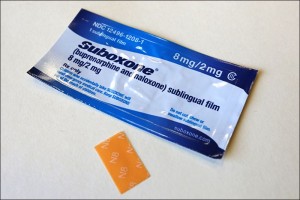How Does Suboxone Work?
If you are interested in the use of Suboxone to overcome an addiction, it is important to learn as much as possible about this medication. Not only should you become familiar with the pros and cons of using the medication, but you also need to know how it works. This will allow you to better understand what type of changes your body is facing, as well as what you can do to improve your chance of success.
There is no denying the fact that opioid dependence remains a major problem in the United States. This will continue to hold true due to the fact that dependence on this type of drug can change the chemistry of the brain. Despite the seriousness, it is possible to reverse the impact and once again lead a normal life.
For many years, doctors have been prescribing Suboxone to treat opioid dependence. There is no guarantee that it will work, but more people than not experience positive effects. Subsequently, they are able to remove drug use from their life. Once they stop taking Suboxone, they are then in position to lead a 100 percent drug free life.
Before we get into the finer details of Suboxone, including how it works, here is something to consider: it can be taken under the supervision of a doctor or as a take home prescription. Either way, it is important to point out that daily visits to a doctor or treatment facility are not necessary. This goes a long way in ensuring privacy, while also making the treatment strategy as convenient as possible.
How does it Work?
Now that you understand why Suboxone is used so often, it is time to learn more about the process. First things first, this medication is only prescribed to patients who are experiencing mild to moderate opioid withdrawal symptoms. The reason for this is that the opioids are beginning to leave the brain’s receptors. This is the best time to use Suboxone, as it will stick to the receptors to achieve the intended results.
As the brain’s receptors fill up with Suboxone, the withdrawal symptoms and cravings will lessen. With the use of daily maintenance doses, Suboxone can continue to keep the receptors occupied. Even if you would decide to use another opioid during treatment, the effects would be greatly reduced.
Tip: it goes without saying that you should not experiment with any type of opioid when being treated with Suboxone.
Four Things you Need to Know

Suboxone is prescribed during opioid withdrawal.
Even though you may not understand the science behind the way Suboxone works, you should still become familiar with what it is doing to your body. This is best broken down into four categories:
- Sticks to the brain’s receptors. By doing this, you will begin to realize that your withdrawal symptoms and cravings are lessening.
- Acts as a partial agonist. This means that you will not get the same effects that are caused by a full agonist, such as methadone and prescription painkillers.
- Through the use of Suboxone, opioids find it more difficult to attach to receptors.
- Does not have the same side effects as other treatments. For example, there is a limit as to how much Suboxone will lower breathing. This is not the case with more dangerous opioids.
Is Suboxone Addiction a Concern?
With the information above in mind, you may begin to believe that Suboxone addiction is a possibility. You may think you are simply replacing one drug with another. While this is a common line of thinking, it is important to realize that the right approach will help you avoid an addiction.
Studies have proven that people using Suboxone therapy improve their chances of success. If you want to achieve these results, however, you need to use Suboxone as outlined by your medical team.
Are there Side Effects?
Understanding how Suboxone works is sure to bring another question to mind: are there any side effects associated with the drug? Just the same as any medication, there are some side effects that you need to be aware of. These typically include: nausea, body pain, insomnia, constipation, sweating, and stomach pain.
If you face any of these symptoms during Suboxone treatment, discuss them with your doctor. You may be able to take another medication to lessen the symptoms, thus making it easier to stick with your treatment schedule.
Note: there are rare side effects of Suboxone to become familiar with. If you experience any of the following, be sure to seek immediate medical attention:
- Feelings of dizziness and/or confusion
- Breathing is slower than usual
- Allergic reaction
- Urine that turns dark
- White of your eyes or skin turns yellow, known as jaundice
- Feeling extremely sick to the stomach
Again, these symptoms of Suboxone use are not common, but they have come to the forefront for some patients in the past.
Final Thoughts
If you understand how Suboxone works, if you fully realize that this type of treatment can help you overcome opioid dependence, you may feel comfortable using it to your advantage.
There are other treatment options to consider, but Suboxone for opioid dependence has been proven as one of the most effective.





